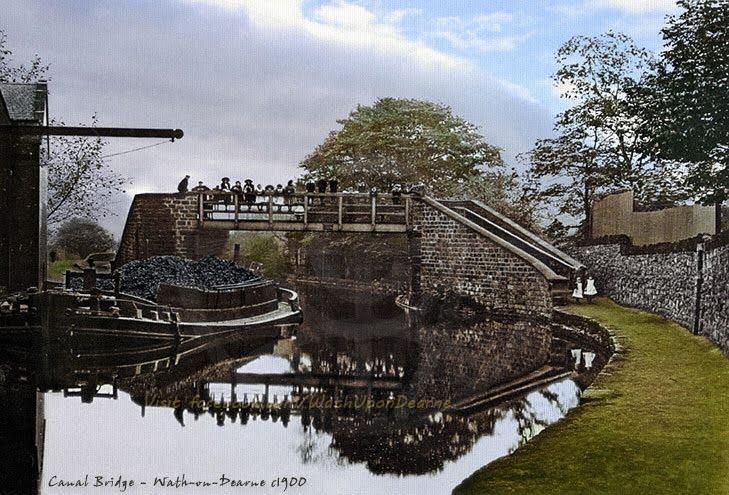THE QUEEN OF VILLAGES
Dearne and Dove Canal
Coal mining must have become an important industry towards the end of the 18th Century.
The Dearne and Dove Canal, which was opened in stages from 1798 to 1804 was built to transport fuel from the local collieries on the southern side of the Dearne Valley to markets in the rest of Britain.
The canal passed through the town just to the north of the High Street on a large embankment and then turned north into the Dearne valley: a wide section known locally as the ‘Bay of Biscay’.
The canal finally closed in 1961 after many years unused and in poor repair. Much of the line of the canal in the town has since been used for new roads; one called ‘Biscay Way’.
Here is another uploaded picture from our numerous archived collections. You can SHARE all our community posts and images. Tell your friends and family to join in and be sure to post your news, events and most of all, your comments to any of the published content which is intended for everyone’s enjoyment.



The image of the Canal Bridge has brought back fond memories of the once prominent structure. Not only was it a foot-bridge, but in the winter months it would be almost impassable because of snow and ice, so much so that we boys from Moor Road would sledge down it at a rate of knots thus making it completely impassable! I seem to remember the part of the bridge facing Moor Road was in two parts, the lower section being a ramp some three yards long. I also seem to think that the far side of the bridge had steps but the sleding side didn’t – forgive me if I’m wrong – it’s 60 years ago! Nevertheless, great fun (and a few bruises) was had by all.
The other bridge that offered the odd challenge was Station Road Bridge. On our way, a long the canal bank, to Victoria School we would climb its stone side, as if it was the Matterhorn, to the road, cross the road, climb over the other side and walk across the bridge on a large stell pipe that traversed the canal. No one fell off and no one was ever injured in the process. Health & Safety didn’t rule in those days.
Returning to the Canal Bridge and onwards just past the “Corporation Pier”, although no one was aware of that name when I frequented the canal bank, I remember the authorities putting a dam across the canal where pumps were installed to drain the canal, I think into the Dyke below. Towards the end of the operation, when the water level was extremely low, there were hundreds of dead and dying fish, some of them quite large, left in the rapidly receding water. I often think what a wonderful amenity that stretch of the canal would have been if it had been sympathetically developed and not drained – a chance was missed!
It’s amazing what memories a photograph brings back.